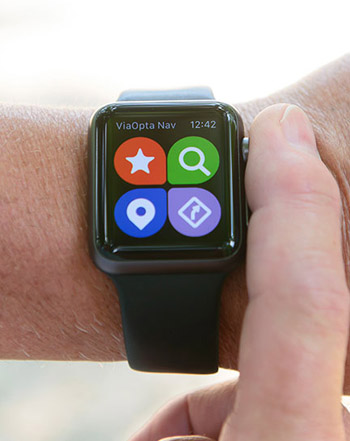Novartis updated its ViaOpta apps with support for modern smart watches, namely the Apple Watch and Android Wear-powered devices.
Both ViaOpta Nav and ViaOpta Daily apps are made for visually impaired people, helping them do things such as walk to a nearby cafe, go to the pharmacy, and pick up their grandchildren at the kindergarten.
ViaOpta Nav is the first turn-by-turn navigation app available for a wearable device designed specifically for visually impaired people, providing voice guidance and vibration settings, which alert the user to upcoming intersections and landmarks. The users can ask for their exact position, add waypoints to a calculated route, and find nearby destinations or landmarks and save them as favorites. Users and their caretakers can also share and access a person’s exact location.
As for ViaOpta Daily, it got a new object recognizer feature that can identify objects in the user’s field of vision when user points the camera of the device at an object. It also got the so called Scene Recognizer that allows users to point the camera of the device at a desired direction or place and the voiceover will tell the user what is in front of them to help them navigate unfamiliar environments.
ViaOpta apps are available in several languages, including English, German, French, Spanish, Arabic, Japanese, Greek, Portuguese, Dutch, Italian and Hungarian.“Novartis is committed to providing innovative solutions which go beyond medicine, like these apps for the visually impaired which benefit their daily quality of life,” said David Epstein, Head of Pharma Division, Novartis Pharmaceuticals. “We are proud to contribute and play a role in making these simple and convenient tools like the ViaOpta Daily and ViaOpta Nav apps available around the world.”
Globally, more than 285 million people live with vision impairment and blindness. In order to reach as many of these people as possible, ViaOpta apps are now available in several languages, including English, German, French, Spanish, Arabic, Japanese, Greek, Portuguese, Dutch, Italian and Hungarian.


